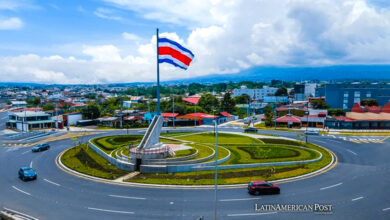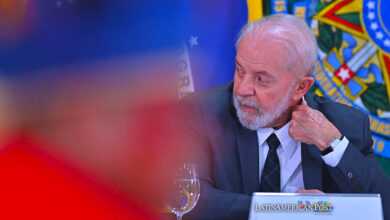Argentina Inflation Surges Past 210%, Challenging Milei’s Government

In an economic climate reminiscent of the harrowing days of the late 1980s and early 1990s, Argentina closed 2023 with a staggering 211.4% inflation rate, the highest since the infamous hyperinflation period of 1989-1990. This daunting challenge marks the beginning of the tenure of President Javier Milei, who took office with a commitment to a radical ‘shock’ economic plan. A bold move was at the forefront of this strategy: a 50% devaluation of the Argentine peso.
Surge in Consumer Prices Signals Economic Shift
The National Institute of Statistics and Census (Indec) reported a 25.5% increase in the consumer price index in December compared to November, signaling a sharp acceleration from the previous month. This rise is believed to be connected to the ‘price honesty’ initiative following the exit of Alberto Fernández’s administration. Fernández’s Minister of Economy, Sergio Massa, Milei’s opponent in the November 19 presidential runoff, had implemented a ‘fair price’ policy, curbing hikes in essential goods.
After Milei’s government revealed its initial economic measures in December, the Central Bank emphasized the importance of price liberalization. This was deemed an essential step to reverse fiscal and external imbalances. The Bank noted that previous pricing distortions aimed to ‘suppress and delay’ inflationary consequences of the state’s deficit policies.
December witnessed significant price surges in various goods and services (32.7%), health (32.6%), and transportation (31.7%). Hikes in medication and private medical insurance premiums drove health costs. Furthermore, food and non-alcoholic beverages saw a 29.7% increase, with staple items like wheat flour, rice, and sunflower oil rising over 50%. These alarming figures directly impact the essential basket value, a critical poverty rate indicator that hovers around 45% in Argentina. The annual increase in this sector reached an astonishing 251.3%.
Government’s Warning and Confidence in Fiscal Plan
Milei’s government, which assumed power on December 10, warned that inflation rates could hit between 20% and 40% in the months leading up to February. However, they remain confident that their ‘shock’ fiscal plan, announced shortly after taking office, will prevent an annual hyperinflation rate of 15,000%. President Milei, in a radio interview, stated that achieving a monthly rate close to 25% would be a “tremendous success” and a cause for congratulating his Economy Minister, Luis Caputo.
Milei’s strategy focuses on achieving fiscal balance by 2024, thereby ending the need for monetary emissions used historically by Argentina to finance its deficit. He also acknowledged the eventual fulfillment of his promise to shut down the Central Bank. This move is central to Milei’s belief that within 18 to 24 months, his policies will tame the inflationary beast.
With a 211.4% inflation rate, Argentina surpasses even Venezuela (193%) and is one of the highest globally, competing with countries like Lebanon. This figure is the highest in the region, and the most elevated Argentina has seen in the last 34 years.
Echoes of Past Hyperinflation
Argentinians vividly recall the hyperinflation years of 1989 and 1990 when the consumer price index soared to 3,079% in 1989 and 2,314% in 1990. These years were marked by exceedingly high poverty rates, similar to the present.
The hyperinflation of the late ’80s led to an accelerated presidential transition from Raúl Alfonsín (1983-1989), the first president post-military dictatorship (1976-1983), to Carlos Menem (1989-1999). Menem later implemented neoliberal policies and introduced the peso-dollar convertibility (‘one to one’).
Economic Crisis and Public Unrest
In 2001, amidst a tumultuous economic crisis, street protests resulted in 39 fatalities and the resignation of then-president Fernando de la Rúa (1999-2001). This historical context casts a shadow over Milei’s ambitious plans.
Milei’s administration faces the daunting task of navigating Argentina through this economic maelstrom. His approach, a stark departure from his predecessors, involves deregulating the economy to the maximum extent and seeking a balance between controlling inflation and spurring growth. The government aims to stabilize the economy by reducing state intervention and encouraging market forces to correct the imbalances.
Also read: The ILO Predicts that the Unemployment Rate in Latin America will Drop by One Tenth in 2024, to 6.1%
With the Argentine public still reeling from the memories of past economic turmoil, the Milei administration’s approach is being closely scrutinized. The success or failure of these policies will not only shape Argentina’s economic landscape.





